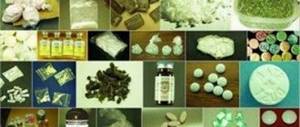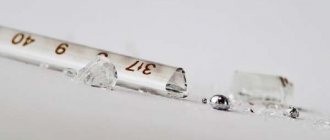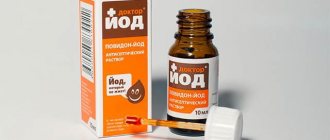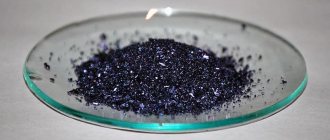Kitchen salt is a chemical compound that contains chlorine and sodium in a percentage ratio of 60:40. The human body is unable to produce this compound on its own, so for the digestive system to function normally, it is necessary to find ways to get salt inside. In addition to the digestive system, table salt maintains water-salt balance, normalizes the functioning of the central nervous system, and creates an antibacterial effect by eliminating microorganisms.
What to do if you have salt poisoning
Kitchen salt is a chemical compound that contains chlorine and sodium in a percentage ratio of 60:40. The human body is unable to produce this compound on its own, so for the digestive system to function normally, it is necessary to find ways to get salt inside. In addition to the digestive system, table salt maintains water-salt balance, normalizes the functioning of the central nervous system, and creates an antibacterial effect by eliminating microorganisms.
Benefits nacl
The body needs salt, it does not produce it, its source is food. For the formation of chlorine and sodium ions, it is necessary for the substance to interact with water. The ions help maintain water and electrolyte balance and stimulate the activity of certain enzymes. Salt is necessary for digestion. Without it, gastric juice is not produced as it should be.
If the amount of salt exceeds the permissible limit, its excess is excreted along with urine, feces and sweat. When a poisoned person has severe vomiting and diarrhea, chlorine and sodium ions come out along with the vomit and feces.
If a person is poisoned by food, drink plenty of fluids. It is recommended that the patient be given “Regidron”, which contains the necessary elements.
Salt deficiency causes a decrease in blood pressure, the patient weakens, experiencing apathy.
Important fact! People who live in the middle zone should consume 10 g (1 tsp) daily. Those who live in countries with hot climates should eat more salt, up to 25 - 30 g: people sweat and lose more sodium chloride.
We invite you to familiarize yourself with Step-by-step production of a wooden greenhouse
Is it possible to be poisoned by table salt or why is salt called “white death”
Despite the many positive properties that are inherent in salt, its excessive presence in the body will lead to table salt poisoning. It occurs in both humans and representatives of the animal world. If timely assistance is not provided to a poisoned person, extremely negative consequences or death await him.
Once inside the body, salt stops a large volume of water masses. After this, the person may experience swelling in the legs or arms. Due to the disturbed ion balance, a decrease in potassium and calcium occurs in nerve cells and red blood cells. This provokes a disturbance in the nervous system; tissues do not receive enough oxygen, accumulating chlorine and sodium. The resulting hypoxia leads to swelling of the lungs and subsequent suffocation.
If an excessive amount of salt compound penetrates the gastrointestinal tract, not only poisoning with table salt will occur, but also mechanical damage to the mucous membranes of the mouth, larynx, esophagus, stomach and intestines. Systematic abuse of salty foods leads to atrophy of taste buds. Each time you need more salt to satisfy your preferences. Thus, gradual poisoning of the body occurs.
General information
Salt appeared on the drug market not so long ago. Designer synthetic drugs are produced without plant materials, making them more affordable than natural drugs.
Just 10 years ago, salts were sold legally and gained great popularity in the USA, Europe, Russia and the East. Salts do not have a pronounced aroma or taste. This drug is universal in the choice of methods of use: it can be snorted, diluted in a drink, rubbed into mucous membranes, and even injected into the rectum.
It is difficult to distinguish intoxication with salt from the consequences of drinking alcohol. The narcotic substance has a low toxic threshold compared to substances of the opiate group. Often, heroin addicts “transplant” to salt, replacing opium addiction with salt addiction. Russian legislation banned the distribution of synthetic drugs in 2012. The category of people most susceptible to salt addiction is young people and teenagers.
Symptoms of poisoning
If salts accumulate in the body gradually, then the symptoms will not be felt immediately. But if sudden salt poisoning occurs, symptoms will appear immediately. These include:
- attacks of nausea;
- vomit;
- an incessant obsessive feeling of thirst;
- blood pressure decreases;
- weakness suddenly occurs throughout the body;
- dizzy;
- diarrhea;
- clouded consciousness;
- labored breathing;
- the skin acquires a blue tint;
- a disturbance in the functioning of the central nervous system, expressed in excessive arousal, anxiety, and fear.
Emergency care and treatment
The above signs of salt poisoning cannot be ignored, especially a strong desire to drink. Therefore, it is worthwhile to provide first aid as soon as possible and transport the victim to the toxicology department. This will help avoid negative effects on vital organs and systems of the human body.
If such a problem arises, then you need to remember what to do in case of salt poisoning:
Carry out a standard gastric cleansing. To do this, take one and a half liters of water boiled to room temperature and offer the victim to drink in large sips. If vomiting does not occur, press the index and middle finger on the root of the tongue. Repeat the procedure several times until only water comes out of the stomach. When carrying out the second washing, it is allowed to add a few granules of potassium permanganate to the water.
If the patient is clearly conscious, give him a few tablespoons of rice water, oatmeal porridge, mashed bananas, and a glass of low-fat milk.
If there is no consciousness, place the victim on his back, turn his head to the side so that the vomit does not cause suffocation.
Make sure the person drinks as much fluid as possible. In small sips and portions.
If table salt poisoning can be eliminated at home, make sure that the victim does not eat food high in salt, spice or fat for 7–10 days. It is also recommended to avoid drinking alcoholic beverages.
If hospitalization is required, the doctor will prescribe lavage using a probe for the patient in the hospital. Therapy aimed at relieving symptoms is as follows:
- calcium chloride solution (10%) is administered intravenously;
- elimination of disorders in the central nervous system;
- inject calcium gluconate solution subcutaneously;
- monitor the required amount of fluid that the patient consumes per day;
- restoration of muscle tone and the central nervous system is carried out using sedatives.
With quality care in a hospital, the patient can expect recovery within 3–4 days after intoxication. The condition for this is strict adherence to the doctor’s recommendations. He will prescribe a diet for a month and rest. Eating such food will not have an irritating effect on the affected gastrointestinal tract, and the recovery period will not take a long time.
Consequences for the body
If treatment for table salt poisoning was not provided in a timely manner or a person treated severe intoxication at home, then negative consequences may await him. Namely:
- surges in blood pressure. This phenomenon is caused by an increase in fluid in the body, blood volume and thickened vascular walls;
- impaired functioning of the central nervous system;
- the formation of stomach or intestinal tumors that are malignant;
- the occurrence of stomach ulcers;
- regular swelling of the legs and arms;
- chronic diseases of the cardiovascular system;
- formation of sand and stones in the kidneys;
- disruption of the gallbladder;
- weakening of bones due to the loss of calcium by the body, bones become brittle, resulting in painful sensations in the joints and fractures.
Signs of a drug addict
To determine whether a person has salt addiction, it is important to pay attention to the following signs:
- Dilated pupils after taking a dose;
- Sudden irritability, anger;
- Absent-mindedness;
- Desire to drink a lot of fluids;
- Lack of appetite;
- Unreasonable anxiety, fear of leaving the house;
- Manifestation of inappropriate feelings: instead of joy, the addict experiences anger and vice versa;
- Insomnia lasting several days.
Additional symptoms of salt addiction include:
- Sudden loss of body weight;
- Deterioration in the condition of hair, teeth, nails;
- Fungal diseases, herpes, stomatitis;
- Secretive behavior;
- The addict may be absent from home for several days.
A salt addict is often in search of the next fix. His need for money increases. May try to steal, sell valuables from home, or ask for a loan.
Table salt poisoning
Significant intoxication with food salt in humans is a rather rare occurrence. After all, to get a fatal overdose, the average person needs to take 200 grams at a time. However, overuse does occur and is followed by a backlash. Table salt in the body is a vital necessity. This compound is the key to the normal functioning of various organ systems and maintaining microelement balance. Animals are not capable of independently producing this substance. It turns out that the product must be regularly supplied to the body from the outside .
Properties of NaCl in a living organism
Everyone knows the saying about a peck eaten. Table salt for an adult man in the average climate zone is needed in a dosage of 10 g per day. That is, to eat a pood for two without harm to health, it will take 2 years and 3 months. And for people from hot countries to “trust each other” in this way, it will take less than a year. Why is this happening? Because the daily consumption of this preservative among southerners is about 30 grams. This process is explained by different rates of elimination of the substance.
Table salt can be excreted in urine, feces or sweat. At elevated ambient temperatures, sweating accelerates and the body begins to lose the necessary elements.
The most important properties of table salt
Maintaining electrolyte balance is the main task of NaCl. Sodium and chlorine ions are present in the blood, tissues, intercellular fluid and do their work. The normal environment inside the animal should be slightly alkaline; the compound is necessary for the digestion process. The secretion of saliva and the production of gastric juice are impossible without it. The content of this preservative determines the normally fluid state of blood and lymph.
Synthetic drug
Salts, as a narcotic drug, are produced and distributed in various forms: tablets, powder, solution, etc. Substances with psychotropic effects have gained a foothold in the market relatively recently.
Pharmacological properties
Narcotic salts most often contain cations of substances such as mephedrone, MDPV, methylone.
Although the composition may vary, and elements with a related name may include derivatives of pyrovalerone or pipradol.
Pharmacodynamics
To date, there is practically no reliable data on the mechanism of the coordinated action of the substance with the brain, as well as on the metabolic process to which the compounds undergo.
How does it affect the brain?
A stimulating effect similar to amphetamines is caused by the property of the constituent components to increase the concentration of monoamines, including dopamine, norepinephrine, and serotonin in synapses. They penetrate the blood-brain barrier less well than amphetamines. This is due to the presence of a beta-keto group, which increases the polarity of such compounds and reduces their hydrophilicity.
The narcotic salt begins to have its effect very quickly, already 15 minutes after consumption. That is why it is often called speed (translated from English as speed). The effect lasts for several hours, or even days.
Pharmacokinetics
According to consumer testimony, the classic dose of mephedrone is 100 to 200 milligrams orally. The result appears after 30-40 minutes and lasts from 2 to 5 hours.
MDPV has more power. From the accepted norm of 10 to 15 milligrams, the effect appears after a quarter to half an hour, and lasts from 2 to 7 hours.
The substances are well absorbed through any mucous membranes.
Such cations are excreted, to a greater extent, in the urine. Indicators of their concentration can be measured in urine, as well as blood, or stomach contents using liquid and gas chromatography, which will be described below. Moreover, they can be detected in the hair structure.
Substance identification
Current current routine screening methods for amphetamines are unable to detect synthetic cations. However, they may give an erroneous result of the presence of amphetamine.
Although there are commercial methods that allow testing using gas as well as liquid chromatography to identify some cations of a synthetic nature, namely mephedrone, MDPV, methylone.
Mechanism of poisoning
Table salt binds a huge amount of water, forming visible swelling of body parts. The sodium content in the blood increases, which leads to a decrease in the percentage of potassium, calcium and magnesium. In this proportion, the compounds begin to act like adrenaline. Having a stimulating effect on nerve cells, the compound leads to a general disorder of the nervous system.
It also affects potassium-bound hemoglobin. By displacing potassium, the element affects the main function of its partner - the delivery of oxygen to tissues. Oxygen starvation begins, which can lead to pulmonary edema and suffocation. Without exception, all tissues and organs accumulate unnecessary amounts of chlorine and sodium. Another dangerous point is irritation of the mucous membranes of the digestive system. The delicate epithelium becomes inflamed, starting from the oral cavity and ending with the intestines.
NaCl poisoning. Symptoms
Table salt is both beneficial, but also hugely harmful to the body. Systematic excess of the norm leads to the fact that the elements of the substance occupy the organs and tissues of the body. With such reserves, consumption must be much lower to normalize a healthy balance. In practice, a person who is accustomed to adding salt to food rarely reduces the amount of preservative in the diet. After all, the food will seem fresh. But he can add salt to dishes. Because of this, table salt poisoning occurs .
Smokers and people who frequently drink alcohol are more susceptible to the effects of the preservative. This occurs due to the atrophy of constantly irritated taste buds under the influence of alcohol and nicotine. A person does not feel the real taste of food and adds salt to it.
Help with poisoning
In case of obvious poisoning, it is necessary to get rid of the substance that has not yet dissolved and been absorbed into the walls of the stomach and intestines. To do this, you need to induce vomiting if the process does not begin naturally. The next step is gastric lavage with a solution of potassium permanganate. To soothe and “lubricate” the irritated gastrointestinal tract, it is necessary to give the patient a mucous decoction. Very thin oatmeal or rice broth is best. The main task is to create an enveloping effect without overloading the digestive organs. Instead of decoctions, it is permissible to use liquid with the addition of vegetable oils and full-fat milk.
If a clear effect on the nervous system is visible or the person’s condition worsens, it is necessary to call an ambulance. It should be understood that large amounts of absorbed sodium chloride cannot be removed at home without special equipment. Cleansing procedures involving droppers are needed. The hospital will also carry out a number of manipulations to improve the condition of the poisoned person.
Maintaining the tone of oxygen-deprived muscles and calming the nervous system with suitable sedatives is normal procedure in the clinic. The patient is put on a bland diet for some time.
Consequences for the body
Development of osteoporosis. The development of this complication is associated with the displacement of calcium from tissues. When its level decreases, bones become fragile. Edema. Table salt retains water in the body. Due to the accumulation of its elements in the tissues, swelling of various parts of the body acquires the status of a chronic disease. Increased blood pressure. This phenomenon is also associated with increased fluid content. Blood volume increases, and the walls of blood vessels become denser . They lose elasticity and reduce their clearance. The load on the circulatory system increases significantly. Ulcerative lesions of the stomach and intestines. Constant inflammation of the gastrointestinal tract can lead to disruption of the integrity of its epithelium, which manifests itself as ulcers. Some studies even indicate a predisposition of irritated cells to mutation, and this threatens the occurrence of cancerous tumors.
Biological role and application
Sodium chloride is essential for the life of any person and other living beings, and chlorine ion is one of the most important materials in the production of hydrochloric acid, which is a component of gastric juice. Sodium ions, along with other elements, are involved in the transmission of nerve impulses and muscle contractions, so their insufficient concentration in the human body causes:
- general weakness;
- increased fatigue;
- various neuromuscular disorders.
Excess sodium causes fluid retention, accompanied by increased blood pressure. There is now a variety of data on the required amount of salt in the daily diet, which can be found in official sources. It is important to consider that the amount of sodium chloride consumed every day always includes salt, which is contained in processed foods, canned food and sauces, as well as other foods and nutritional supplements. If there is an excess in the daily diet, such a seasoning can easily lead to poisoning.
Sodium chloride has a characteristic taste that is well known to every person, without which any food will seem bland. This feature is determined by human physiology, but people often consume much more of this seasoning than is necessary from the point of view of physiological processes. Among other things, table salt is widely used in industrial conditions for the production of chlorine and soda, hydrochloric acid, hydroxide and sodium metal.
What to do if you are poisoned by table salt?
Salt (sodium chloride) is a vital mineral for humans and animals. A deficiency of the element is accompanied by disruptions in the functioning of the heart, stomach, and nervous system. But with an excess of this substance, salt poisoning can occur.
By what signs is intoxication recognized, is it possible to die from an overdose, what to do in case of salt poisoning - you will learn from this article. Read about the drug salt here.
Is salt white poison or a substance necessary for the body?
The famous saying of the founder of pharmacology, Paracelsus, says: “Everything is poison or medicine. Both depend on the dose.” Salt is no exception. Required by the body in certain quantities, in excess it becomes poisonous.
Not a single living creature can live without salt. If a person lacks NaCl, bones are destroyed, muscles atrophy, disruptions in the functioning of the heart and digestive system occur, and depression begins. A complete lack of sodium chloride in food can kill a person in 10 days.
The lethal dose of salt for humans is 200-250 grams for a single use within 1-2 hours. The cause of death was cerebral and pulmonary edema. It is unlikely that a person in his right mind would decide to eat such an amount of product that he would die. It will also not be possible to quickly poison a person with salt. Excessive intake of NaCl provokes the development of diabetes and lung cancer.
According to the latest WHO recommendations, the maximum amount of rock salt in food should not exceed 5 grams (1 teaspoon) per day. On average, the body needs 1.5–4 g of sodium chloride per day.
When drawing up a menu, it is necessary to take into account that a person receives table salt along with eggs, dairy products - cheese, cottage cheese, kefir. Processed foods are especially high in NaCl. For example, 100 grams of ham or salted popcorn contain almost the daily requirement of salt.
Experts remind that excess NaCl leads to the development of potassium deficiency in the body. The K deficiency must be compensated for by dishes made from beans, jacket potatoes, nuts, cabbage, and spinach.
Death from intoxication
Death is quite possible from sodium chloride poisoning. However, this phenomenon occurs in extremely rare cases. Deaths are possible only when consuming three grams or more per kilogram of weight. Also, the cause of death may well be the systematic excessive consumption of so-called nitrite salt. This product is widely used today in the preparation of a wide variety of sausages that are commercially available.
Causes of sodium chloride poisoning
Table salt in humans and animals is quickly absorbed in the digestive tract, disrupting the isotonic state of the blood. At the same time, the ratio of monovalent cations K, Na and divalent cations – Mg, Ca changes.
In a normal state, sodium and potassium provide excitation of nerve cells, and magnesium and calcium provide inhibition. Balanced chemical processes ensure the normal functioning of the peripheral and central nervous systems.
In case of poisoning, the Na index in the blood plasma increases by 2 times, and in erythrocytes by 3–4 times. Accumulating in cells, sodium and chlorine cause convulsions, muscle tremors, and paralysis of the limbs.
Video
All iLive content is reviewed by medical experts to ensure it is as accurate and factual as possible.
We have strict sourcing guidelines and only link to reputable sites, academic research institutions and, where possible, proven medical studies. Please note that the numbers in parentheses ([1], [2], etc.) are clickable links to such studies.
If you believe that any of our content is inaccurate, out of date, or otherwise questionable, please select it and press Ctrl + Enter.
Salt is a white powder with a characteristic salty taste. This is a well-known chemical compound, which is represented by sodium and chlorine ions. It has the ability to react in the human body and cause various reactions. Often causes poisoning. As a result of the reaction, new substances, ions, can be formed, which do not always have properties beneficial to the body. The substance is dangerous not only for humans, but also for animals in large quantities. However, without it the normal functioning of the body is also not possible.
Symptoms of salt poisoning
Table salt poisoning is more common in animals than in people. The cause is excess sodium chloride in feed. Sources may include food waste. An overdose of NaCl is most often provoked by an erroneous calculation by the livestock breeder.
Acute intoxication in humans is rare. After all, then you would have to eat a glass of NaCl in a short period of time. Symptoms of chronic salt poisoning occur more often with systematic consumption of large amounts of salty foods:
- Dizziness. Associated with increased blood pressure and caused by an increase in the volume of fluid circulating in the blood vessels.
- Feeling thirsty. If you eat a lot of salt, your electrolyte imbalance occurs. Sodium attracts water. The brain receives a signal from blood chemoreceptors about water deficiency.
- Heart failure. Increased consumption of NaCl leads to a decrease in the amount of potassium in the blood necessary for myocardial contraction. For this reason, table salt poisoning is accompanied by depression of cardiac activity with severe shortness of breath and blue discoloration of the skin.
- Nausea and bloating. Thirst and drinking too much lead to fluid accumulation in the stomach cavity. This disrupts the peristalsis of the walls - the contents hardly pass into the intestines. In addition, the hydrochloric acid needed to process food is excessively diluted with water. As a result, food is poorly processed and gases are formed.
An overdose of salt helps tissue retain water. Fluid accumulates in the internal organs. The face and limbs swell. Water collects in the brain and lungs.
Overdose cases
A good half of the human population mistakenly believes that those drugs that are injected intravenously are dangerous, and various smoking mixtures, tablets for oral administration, and powders for inhalation do not have harmful consequences.
2-3 doses of such drugs contribute to the formation of a powerful addiction. And systematic use, and even more so abuse of narcotic salts causes irreversible phenomena in the psyche.
Dangerous norm
There is a risk of cerebral edema
Treatment
Treatment of salt poisoning at the hospital stage consists of maintaining the activity of the heart and respiratory system. Carry out emergency symptomatic treatment:
- An antidote is administered - 5 ml of Unithiol.
- A specific remedy for salt overdose is calcium chloride 10%. 10 ml of this solution is infused intravenously. In the same concentration, it is given orally, 1 tablespoon 3-4 times a day.
- A 40% glucose solution is administered intravenously.
- Caffeine 10% is used in the form of intramuscular injections to stimulate the vasomotor and respiratory centers.
In addition to medications, a decoction of flax seeds is prescribed. By enveloping the mucous membranes, it prevents the absorption of salts into the blood. The patient takes sunflower oil as a laxative.
Possible consequences
As a result of prolonged excess salt, all organs and systems suffer. The most common consequences of chronic intoxication:
- Osteoporosis. Sodium chloride displaces calcium from bones. They become less dense, which easily leads to fractures and cracks under normal loads. In patients with this pathology, there is an increase in NaCl in the tissues.
- Urolithiasis disease. The kidneys collect fluid from throughout the body and excrete it in urine. If there is an excess of salt, the process is disrupted. Calcium coming from the bones is deposited in the form of dense stones in the renal pelvis, ureters, and bladder.
- Deforming polyarthritis. Excess NaCl settles in the joints. Their stiffness develops and their range of motion is limited. The joints are deformed.
- WHO experts warn of an increased risk of heart and vascular diseases with excessive salt consumption, which overloads the myocardium. Over time, the muscle hypertrophies, and its contractility weakens at a certain stage.
- Excess salt in food can trigger the development of diabetes.
- Over-salted food irritates the inner walls of the digestive tract. Abuse of marinades and pickles increases the risk of developing stomach cancer.
Experts say that over time, lovers of “salty” food develop chronic lung diseases.
Prevention
To prevent salt intoxication, it is important to adhere to proper nutrition. It is necessary to monitor the amount of product consumed in the daily diet.
When purchasing prepared food products, read labels for salt content. Nutritionists say that we get 75% of NaCl from store-bought products, and not from home-cooked food.
The most effective way to protect yourself from excess salts is to limit the consumption of sausages, sausages, and hams. To improve the taste, they are oversaturated with sodium chloride and sugar substitutes.
To prevent an overdose of NaCl, you need to prepare food at home. Eat less fast food. It is necessary to include more vegetables and fruits in your diet, which remove excess salt.











